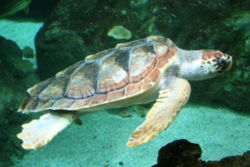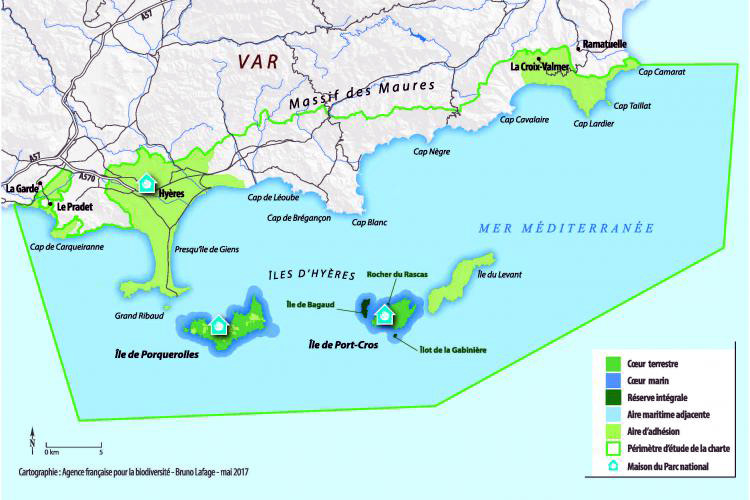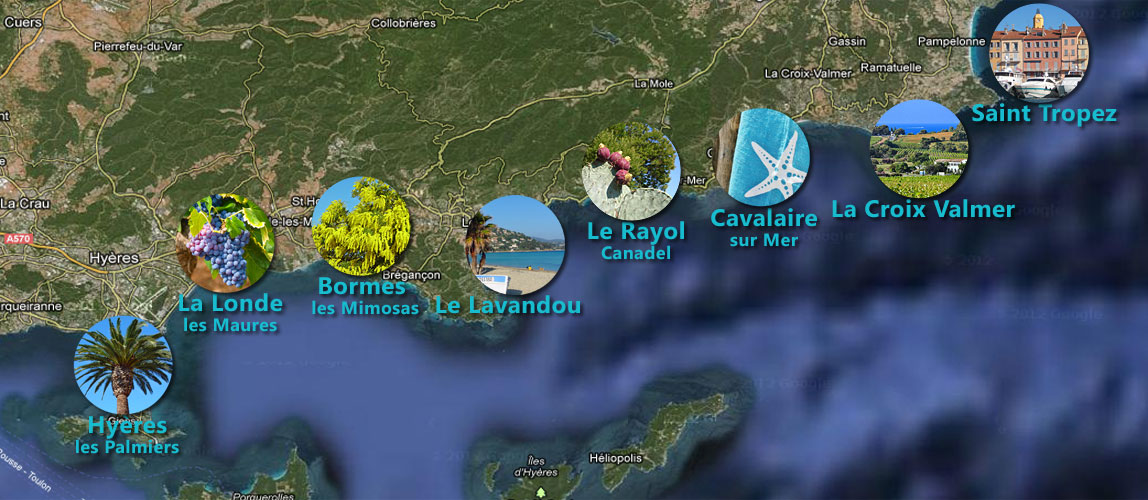Endangered nature in Mediterranean
The Var and more particularly its Mediterranean coast - more than 430 km of coast, 600 km of rivers, 400 000 hectares of wooded areas, 3000 species of plants, 350 species of birds, 300 days of sunshine a year - is in danger. Because, unfortunately, too many communities are involved in its destruction, deny or abusively exploit the natural environment by a summer overpopulation and irresponsible real estate development. If stranding of cetaceans and other marine mammals, notify the Réseau National d'Echouage (RNE) or call 18 or 112 and follow instructions |
 |
The loggerhead turtle
In France, despite being protected since 1991, it already disappeared as a breeding species at the turn of the century. In the sea, it is sometimes accidentally caught in fishing nets. It suffers from pollution as it ingests plastic bags, which it mistakes for jellyfish. The future of this species in the Mediterranean depends on protecting the egg-laying sites that still remain in the eastern zone. Weight: 105 kg, size: 1.10 m. Lives to an average age of 40
|
|
France is falling behing 600 species threatened with extinction (UICN reporting) Extinct species : seahorse (hippocampe), harbour porpoise, Pyrenean ibex, Noth Atlantic whale and monk seal (extinct on the Provence coasts since the 30s and in Corsica since late 70s). Brown bear (fifteen or so survivors on the mainland), bat (Mehely's horsehoe) , Orsini's viper...
Endangered species: European hamster, European mink, northern lynx ( fewer than 150 adult individuals have been counted in the Alps, Vosges, and Jura), common dolphin, giant limpet, date shell, diadema setosum, northern minke whale, red tuna, dragonflies, crixkets, Corsican red deer, Herman'ns tortoise, green toad, Lanza's salamander
Critically endangered: bee, swallow, grey wolf, mouflon, sperm whale, three species of bat (Common bent-wing bat), long fingered bat, Felten's myotis, ). Posidonia Oceana, loggerhead turtle.... |
Between 1896 and 1998, the beaches of Provence shrank by 11 metres, as the sea level rose by 11 centimetres during that period. In 2100, they will have shrunk by 25 metres. The erosion of the Var beaches, inexorably rising sea levels, pollution on land and in the sea, changes to fauna and flora... this is a major ecological and economic reality for Mediterranean Provence. Let’s take action with the communes of the Var coast to support the Port-Cros National Park |
 |
Founded in 1963, Port-Cros National Park celebrates its 60th anniversary, covering 700 ha of dry land and 1288 ha of sea surfaces, is one of the two oldest National Parks in France and Europe’s number one sea park. It includes the islands of Port-Cros and Bagaud, the islets of La Gabinière and Le Rascas, as well as a marine perimeter 600 m wide. Its work also extends to the neighbouring island of Porquerolles, where it manages 1000 ha of natural areas granted to it by the State, and administers the National Mediterranean Botanical Conservatory of Porquerolles, which is in charge of saving wild flora and varieties of fruit trees which are under threat in the Mediterranean.
 In 2026, COP31 will take place from November 9 to 20 in Antalya, Turkey, a Mediterranean resort city dedicated to climate change. Australia will hold the "chair of the negotiations" and will have a vice-chair, while the formal title of COP31 president will go to Turkey. Australia will also host the pre-COP conference to focus attention on island states threatened by rising sea levels. In 2026, COP31 will take place from November 9 to 20 in Antalya, Turkey, a Mediterranean resort city dedicated to climate change. Australia will hold the "chair of the negotiations" and will have a vice-chair, while the formal title of COP31 president will go to Turkey. Australia will also host the pre-COP conference to focus attention on island states threatened by rising sea levels.
|

|
|
|
|


